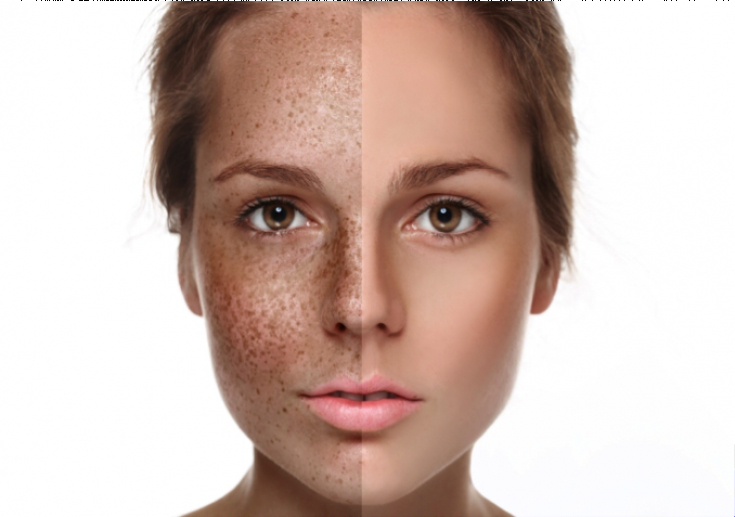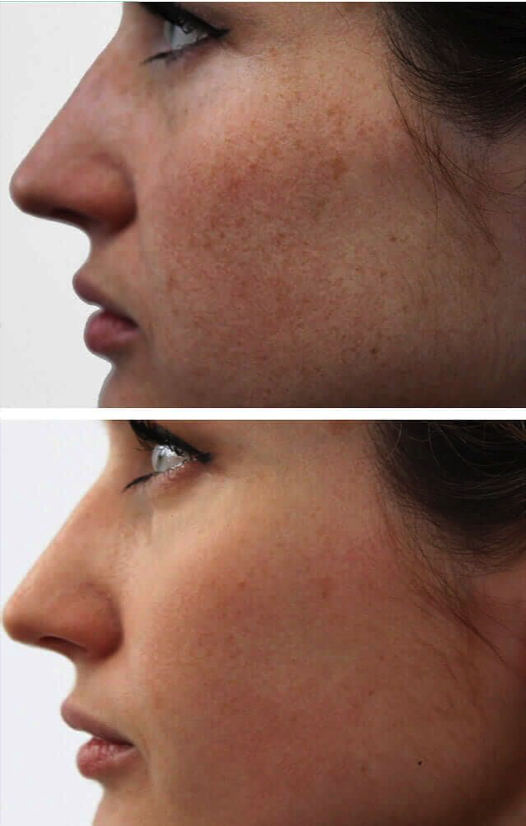Hyperpigmentation – a fairly common phenomenon that occurs among patients of all age groups. Usually it does not pose any danger, does not affect performance and is only an aesthetic problem, but nevertheless causes discomfort to patients. Today, there are many ways to deal with hyperpigmentation, but in order to use them correctly, you need to understand what underlies the changes that have occurred and what methods of prevention exist.
On estet-portal.com read what are the pigmentation skin disorders, as well as what methods exist to correct this state.
- How is melanin synthesized? Factors regulating the process of melanogenesis
- Mechanism that determines the way forward: hypo or hyperpigmentation
- The main types of hyperpigmentation
- Patient Motivation and Perspective Hyperpigmentation Treatment
Let's consider the biochemical process of melanin synthesis to understand the occurrence of
hyperpigmentations. Melanin is synthesized from the amino acid tyrosine by the action of the enzyme tyrosinase in the cells melanocytes. Further, thanks to the processes melanocytes, the synthesized melanin is transferred to keratinocytes and evenly distributed, thereby betraying the skin tone.
Follow us on Factors affecting melogenesis can be conditionally divided into endogenous and exogenous.Endogenous factors:
- Genetic predisposition
- Somatic and dermal pathologies
- Hormonal changes
- Vitamin B12 and folic acid deficiency
- UV radiation
- Infrared and X-rays
- Traumatization of the skin (mechanical, chemical, physical)
melanocyte-activation of the stimulating hormone by cathepsins occurs.
The mechanism that determines the path forward: hypo or hyperpigmentationNerve impulses change depending on negative stimuli and affect the pituitary and pineal glands, which affects the production of
melanocyte-stimulating hormone and melatonin. The further scenario depends on the physiological antagonism of these hormones, if melanocyte-stimulating hormone (intermedin) prevails, hyperpigmentation will develop, in case of a lack of intermedin or an excess of melatonin, hypopigmentation is expected. Disturbances
skin pigmentationare divided into primary and secondary.
Primary ones can be limited or have a generalized character, for example, in systemic diseases of the hepatobiliary system and Addison's disease.- Secondary disorders skin pigmentation
- observed after acute and chronic dermatoses and resolution of primary morphological elements (papules, pustules).

While
hyperpigmentationcan occur in patients with any skin type, melanogenesis disorders are more common in people with dark phototype. The main types of hyperpigmentation
Solar lentigo:
hyperpigmentationsun lovers
Read also:Lentigo: how to get rid of a cosmetic defect Solar lentigo is most often called "age" or "hepatic" spots. Lentigo are located on open areas of the skin – face, chest, shoulders and arms. These can be spots of various sizes, the number of which increases with age.

The following topical agents have a good effect in the treatment of these changes:
cream containing fluorocinolone acetonide 0.01%, hydroquinone 4% and tretinoin 0.05%;
- whitening solution - 2% mequinol and 0.01% tretinoin.
- Lentigo responds well to treatment with trichloroacetic peels, cryotherapy and laser. Melasma: when sunscreen becomes a constant companion. Melasma is a symmetrical skin lesion in the form of
, which is more common in women. The appearance of melasma is associated with hormonal changes, and the effect of estrogens on melanocytes. Treatment of melasma is a very lengthy process that can take years. At the same time, sunscreens become constant companions of patients. First line treatment includes photoprotectors, hydroquinone, and a three-component cream containing fluorocinolone acetonide 0.01%, hydroquinone 4% and tretinoin 0.05%.
In second place in the treatment of melasma are chemical peels based on glycolic, lactic and salicylic acids, which are best done 2 times a week. At the same time, the darker the skin, the lighter peels should be used.Read also:
Using peels to combat hyperpigmentation Post-inflammatory
hyperpigmentation: unwanted complications of cosmetic procedures. Post-inflammatory hyperpigmentation occurs as a result of trauma, after exposure to certain medications and even some cosmetic procedures. Fungal or viral skin infections, allergic reactions, contact dermatitis can provoke an increase in the activity of melanocytes . For the treatment of post-inflammatory hyperpigmentation , the same skin whitening products are used. However, it is important to remember that the earlier the – the better results you can get. As the popularity of aesthetic procedures continues to grow, the frequency of post-inflammatory hyperpigmentations also increases. Thus, not only the treatment of pigmentation changes, but also effective their prevention is becoming more and more relevant. Patient Motivation and Hyperpigmentation Treatment Perspective
To solve the aesthetic problem of the already existing
hyperpigmentationis not so difficult, the main problem is to control the appearance of new foci hyperpigmentation. The task of the doctor is to explain to the patient that achieving a result in treatment ;hyperpigmentation is only half the success. The second half of the success is maintaining the result and preventing further changes. Patients with skin pigmentation should avoid UV rays and use SPF cream on an ongoing basis, adherence to all activities outside the beauty parlor is a prerequisite for ensuring the result of treatment.
More useful information on our





